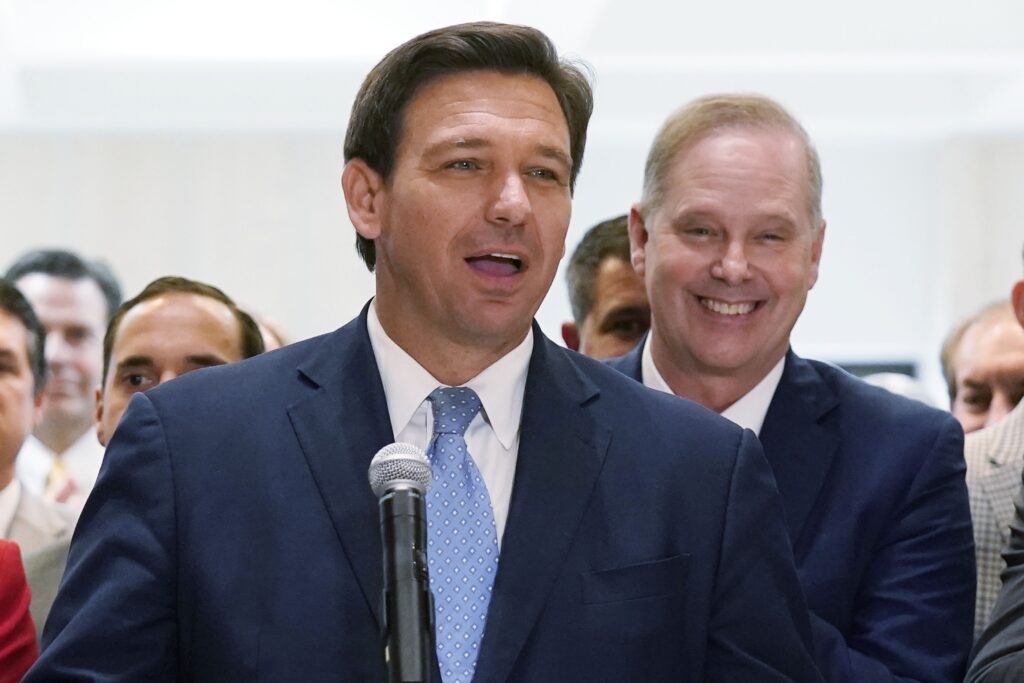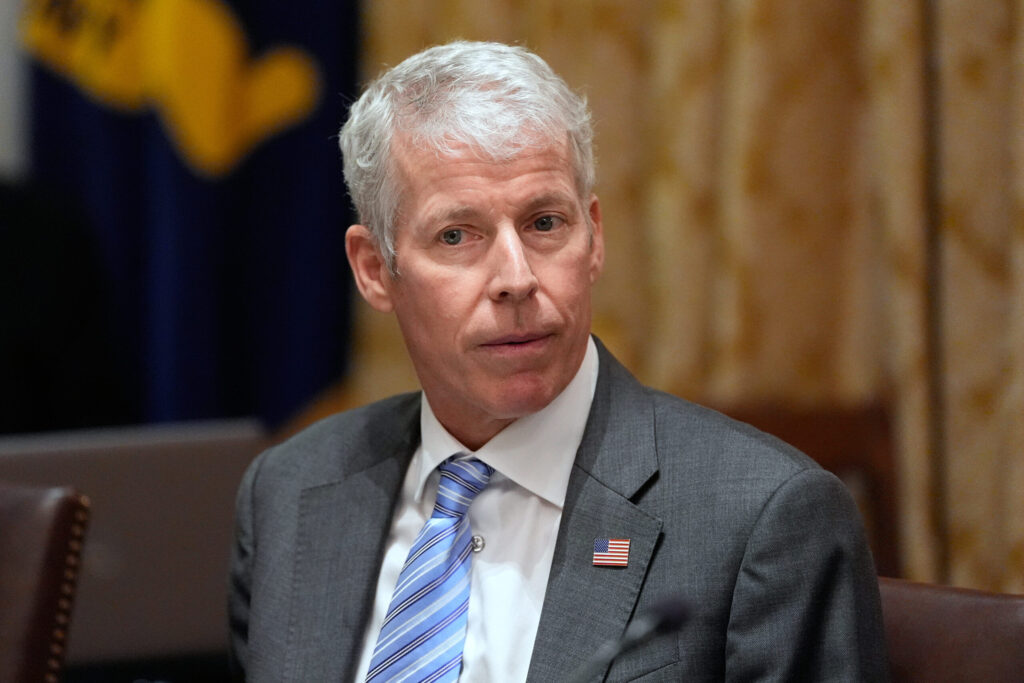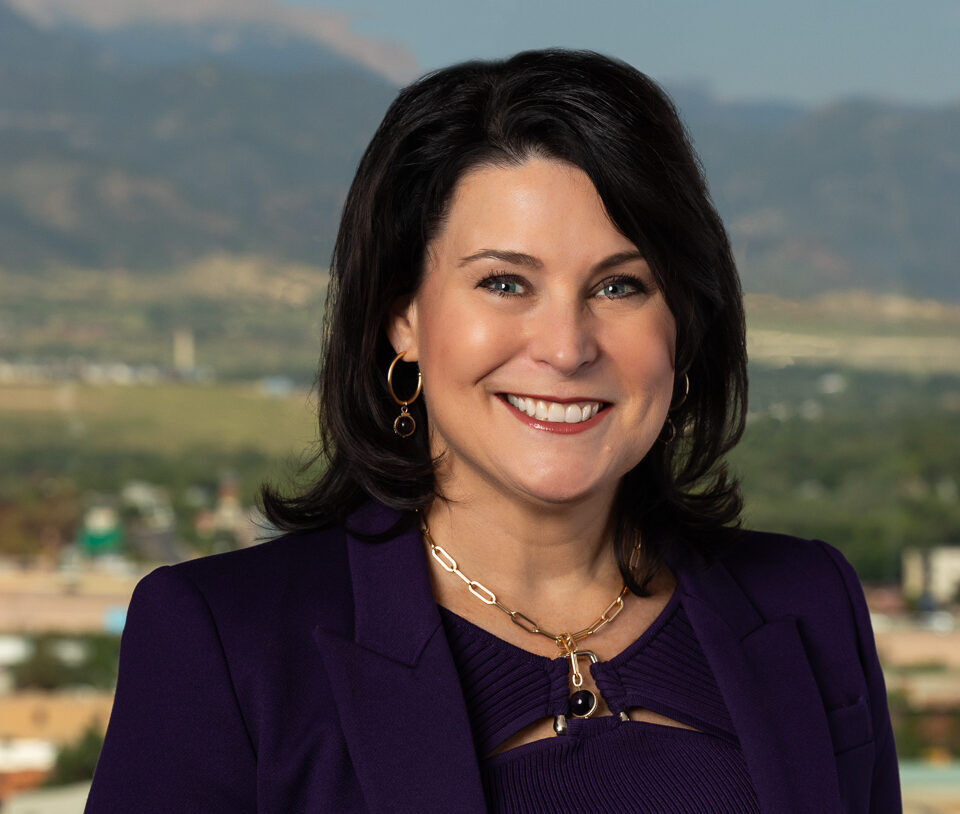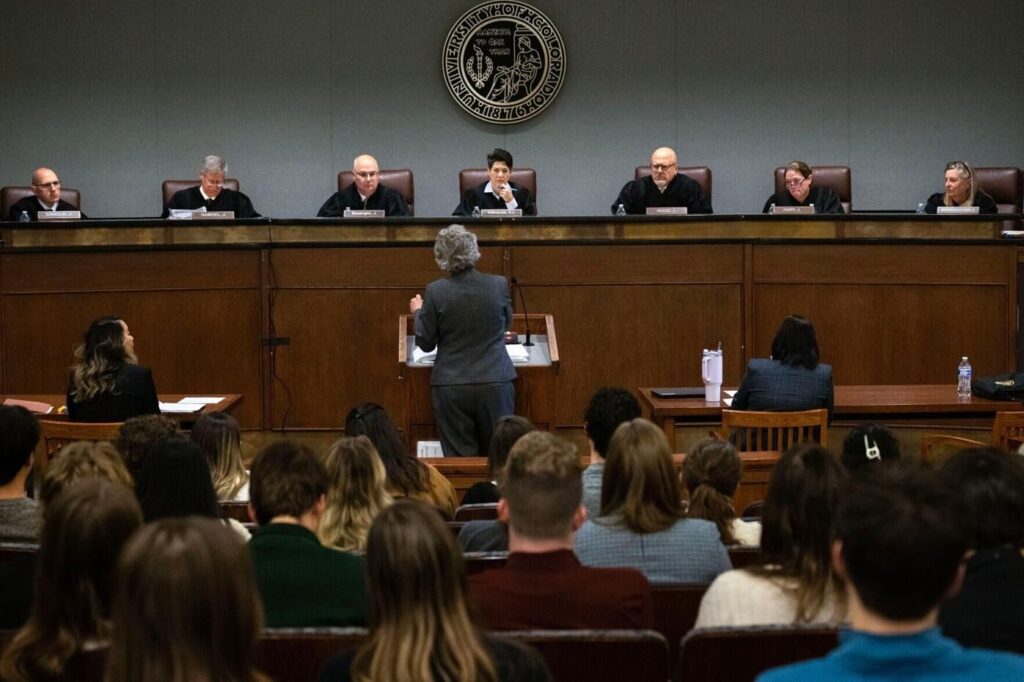Colorado lawmakers agree on compromise legislation seeking to protect wetlands
Two vastly different approaches to protecting a million acres of Colorado wetlands became part of a compromise that is now nearing the governor’s desk.
The Senate on Monday unanimously approved House Bill 1379, the measure backed by House Speaker Julie McCluskie, D-Dillon, and Sen. Dylan Roberts, D-Summit County. It now heads to the House for review of a compromise amendment, which is expected to pass, and then head to the governor for signing.
Over the weekend, the proposal had added a significant new sponsor: Sen. Barbara Kirkmeyer, R-Weld County, the sponsor of the competing measure, Senate Bill 127.
Lawmakers have been looking at dueling approaches contained in two measures seeking to implement a way for the state to manage “dredge and fill discharge” permits tied to a recent U.S. Supreme Court decision that redefined how a body of water can be protected under the Environmental Protection Agency’s “Waters of the United States” rule.
Supporters of the first bill, which gives the permitting task to the Colorado Department of Public Health and Environment, insist it’s the proper venue because it already experience dealing with permitting and water quality issues. Supporters of the second measure, which hands the responsibility to the Colorado Department of Natural Resources, maintain that the Department of Natural Resources is better equipped, since it already deals with related disciplines, such as water resource management, water rights law and land management.
In any case, policymakers agree that Colorado residents, industries and the wetlands need certainty.
Chief among the changes contained in the compromise are exemptions for agricultural ditches, so they wouldn’t be required to seek permits for clearing debris; grandfathering in existing projects, a major concern for reservoir operators who said they dredge sediment annually and would object to obtaining permits to do so; and, a reporting process to make sure permits don’t get bogged down at the public health agency.
Kirkmeyer said the agency would be required to report quarterly to the Joint Budget Committee, where she is the committee’s ranking Republican member, to ensure there’s no backlog in permits, as well as annual reports to the governor and General Assembly.
Will a million acres of Colorado wetlands lose protection?
The proposed changes in Colorado arose out of the U.S. Supreme Court’s 9-0 ruling in May 2023 in favor of the Sacketts, an Idaho couple who bought land on which they wanted to build a home in 2004. The parcel was about 300 feet from Priest Lake, one of the state’s largest. They began backfilling the lot with dirt and gravel, which earned them the attention of the EPA. The agency said the land contained a protected wetland across a paved road and was connected by a ditch and creek to Priest Lake.
The EPA blocked that development, partly because the Sacketts did not obtain a permit for dredging and filling discharge from the U.S. Army Corps of Engineers, which manages wetlands.
The majority opinion, authored by Justice Samuel Alito, relied on a 2006 opinion in Rapanos v. United States from Justice Antonin Scalia. That viewpoint held that “any wetland that does not connect at its surface to another body of federally protected water doesn’t merit the same degree of protection.”
Alito noted, “The wetlands on the Sacketts’ property are distinguishable from any possibly covered waters.”
The ruling’s potential impact in Colorado, according to some experts, is to lose protection for nearly a million acres of wetlands.
Pitkin County Commissioner Greg Poschman had pointed out during an April hearing on HB 1379 that the state’s headwaters are made up of small streams that do not have year-round flow because they are under snowpack half the year — suggesting Sackett would put those waters at risk.
“Many of these areas are seasonal wetlands and wet meadows,” Poschman said. “These pristine headwater streams flow into the western rivers, which are the very backbone of our state’s recreation, tourism, and agricultural economies. They recharge groundwater, filter pollutants, ensure clean drinking water, and reduce the risk of flood, drought and wildfire.”
Another expert estimated that 45% of Colorado’s streams are intermittent and 24% are short-term in their lifespan, leaving two-thirds of Colorado waters outside of “Waters of the United States” protections.
The Colorado approach
While the issue has been a concern since the Trump administration narrowed the EPA rule in 2020, after the U.S. Supreme Court Court’s decision came out, Gov. Jared Polis convened a task force to figure out how Colorado should respond.
The task force considered two thoughts. One was a “gap” program that could cover any waters no longer protected by Sackett. The other was what supporters called a Colorado-based approach that relied on existing state law about what defined Colorado waters and would be much simpler to operate.
Colorado is now in the position of developing its own permitting program to protect those wetlands, particularly for dredge and fill discharge permits, experts said.
The two measures looked nothing like each other at the beginning: House Bill 1379 sought to protect far more than the million acres of wetlands left unprotected by Sackett, while Kirkmeyer’s bill, Senate Bill 137, sought to protect only the wetlands affected by Sackett.
Another major division was over who would handle the program that would require primarily construction companies and water providers to seek permits for dredge and fill activities.
HB 1379 wanted to put it into the hands of the Water Quality Control division at the state’s Department of Public Health and Environment, an agency that has a lengthy backlog of permits awaiting renewal or approval. SB 127 would have started a new permit program from scratch at the Department of Natural Resources, which Kirkmeyer said deals with the intersection of water rights, water infrastructure, water planning, and water quality.
Both sides agreed there would be around 100 to 150 permits required per year. The big question was just who would have to obtain permits.
An April hearing in the Senate Agriculture and Natural Resources Committee showed water providers much preferred the approach taken in SB 127, along with complaints about the other bill, including that McCluskie wasn’t interested in their input.
Kirkmeyer, who owns water rights in Weld County, pointed to more than 40 different groups that worked on SB 127, including farmers, Colorado Water Congress, dozens of municipal and county governments and virtually every major agricultural organization in the state. A handful of environmental groups formed the only opposition.
Given that Roberts chairs the Senate agriculture committee, it was touch and go whether SB 127 would make it to its next step. Kirkmeyer offered an amendment to allow the state public health agency run the program, and that was good enough for Sen. Janice Marchman, D-Berthoud, to vote in favor and sent it Senate Finance, where it won unanimous support.
The bill never progressed from there, as negotiations began in earnest to find a compromise.
Last Friday, Kirkmeyer presented HB 1379 to the Senate Finance Committee, along with an amendment that formed the compromise.
Colorado has never before been regulated in this arena, Kirkmeyer told the committee, so the importance of building an appropriate program just cannot be understated.
In a statement Friday, Kirkmeyer said she would scrap her bill and sign onto HB 1379 as it would incorporate her “robust wetlands protections while providing certainty to communities and homebuilders.”
The bill also protects historic water rights in Colorado, she said.
“It’s important that we do this right,” she said. “And I believe this bill helps lay the foundation to ensure that we do this right.”











